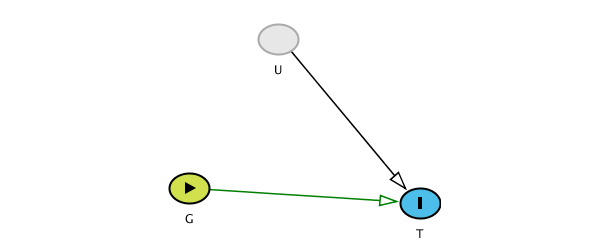According to Wray and Visscher,
heritability is formally defined as the proportion of phenotypic variation (VP) that is due to variation in genetic values (VG).
My question is, what does “due to” mean here?
My first thought is that its meaning is causal. By using Pearl’s causality framework, I’d think that we could say something like: I have a variable T (trait), and a pool of genes (G) as cause. Also, other variables (not genes) also cause T, let’s call them U. Thus, it seems that this is a (simple) causal model behind heritability:
However, let’s say the trait is accent. It is unlikely that genes have a causal effect on this trait, so the arrow from genes to this trait would not exist. However, if we measure it in some way, we will probably be able to compute the heritability of this trait, especially because white Americans, for instance, speak with a different accent than Afro-Americans (thinking about the USA). So, we should conclude from this that the “due to” in the definition above has nothing whatsoever with causality. It is talking about correlation: how much of the variation in the trait we can associate with genes. So, if we have the following causal model (to make things simple), we would still be able to compute the heritability of a trait.
However, the only effect of gene on accent is mediated by an environmental variable (segregation), which has no direct effect whatsoever of genes.
So, my question is: does heritability depend on having a causal model? If so, are estimates done with an explicit causal model like a DAG? Do they try to control for confounding and other things that may cause a biased estimation?


